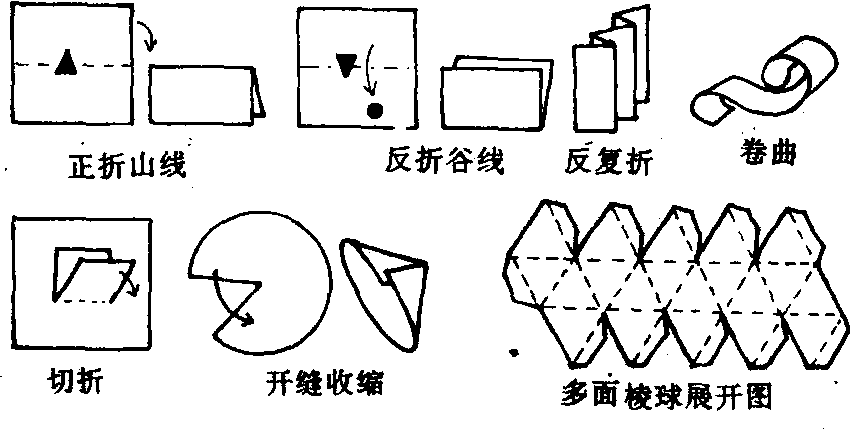纸造型教学Zhizaoxing jiaoxue
以面状材料造体型的课业教学。在课堂教学中,教学生以折叠、卷曲、收缩等多种加工方法,将较厚的图画纸作成浮雕、圆雕和多变的几何形体。纸造型教学是学习掌握厚纸立体结构基础知识和制作技能的主要途径。为了保证在规定课时内学好这类知识与技能,使学生在较短的时间内见到自己制作的成果,教师应指导学生剪裁纸张,认清折线位置,掌握正、反折和粘接的部位,以便提高学生的学习兴趣,更好地完成教学任务。教师要掌握纸张立体造型的多种构成方法。如正折山线使纸张凸起,反折谷线使纸张凹下,反复折使纸张成折扇形,卷曲使纸张成涡状或波状,切折使纸张一部分突出,开缝收缩使平面变成碗形或圆锥形等,掌握这些立体构成的方法在教学中灵活运用,制作多种纸的立体造型工艺品。在备课时教师应为学生选择简单易成的纸造型学习内容,如多面棱球、简单建筑物浮雕,在图画纸上油印展开图样或分解图样,上课时分发给学生剪裁制作,在制作过程中应着重检查学生对正、反折线的理解和掌握情况,避免折错方向,纸造型教学中除了让学生照图制作外,教学中尽量发挥学生创造性,如学会制作花瓣叶的方法,让学生自己组合成立体浮雕花形。

纸造型
- Macedon,Kingdom of
- Maceio
- Macgilljcuddy′s Reeks
- MacGregor,Robert
- Machado de Assis,Joaquim Maria
- Machado,Gerardo
- Machado,Ruiz Antonio
- Machaut,Guillaume de
- Macha,Karel Hynek
- Machel,Samora
- Machen,Arthur
- Machiavelli,Niccolo
- machine
- machine gun
- machine toolsl
- Mach number
- Machu Picchu
- Mach,Ernst
- Macias Nguema Biyoga
- Macintosh,Charles
- Macintyre,Duncan Ban
- Mackenzie
- Mackenzie King,William Lyon
- Mackenzie River
- Mackenzie,Alexander